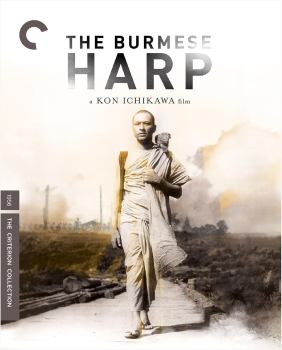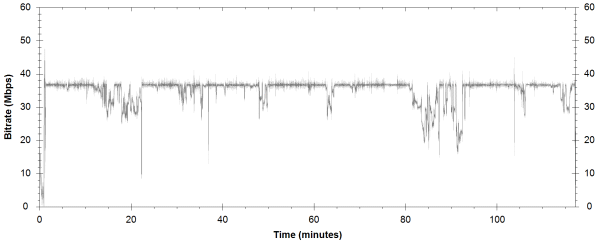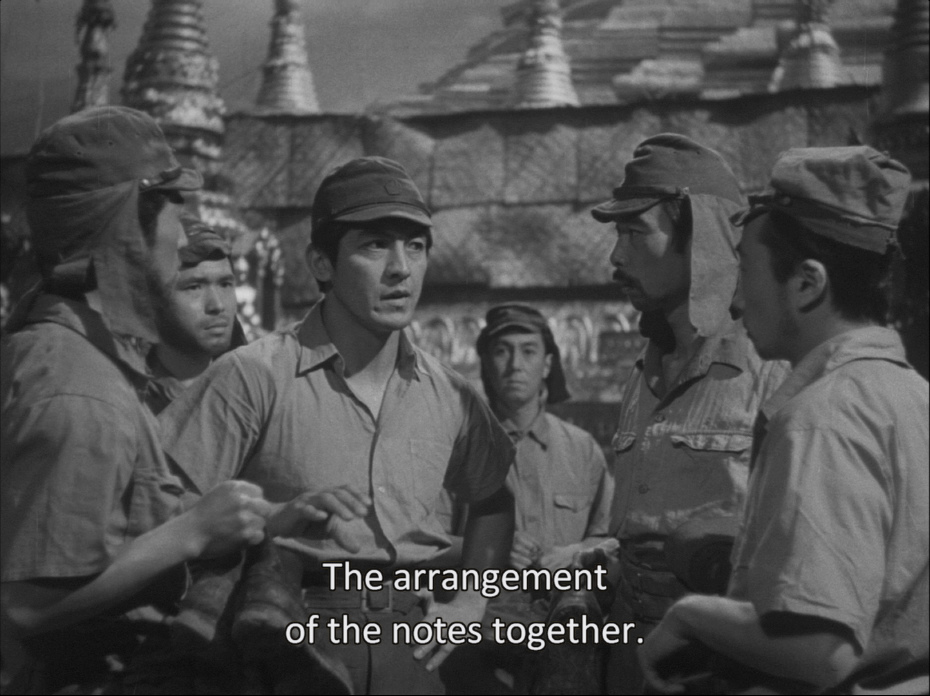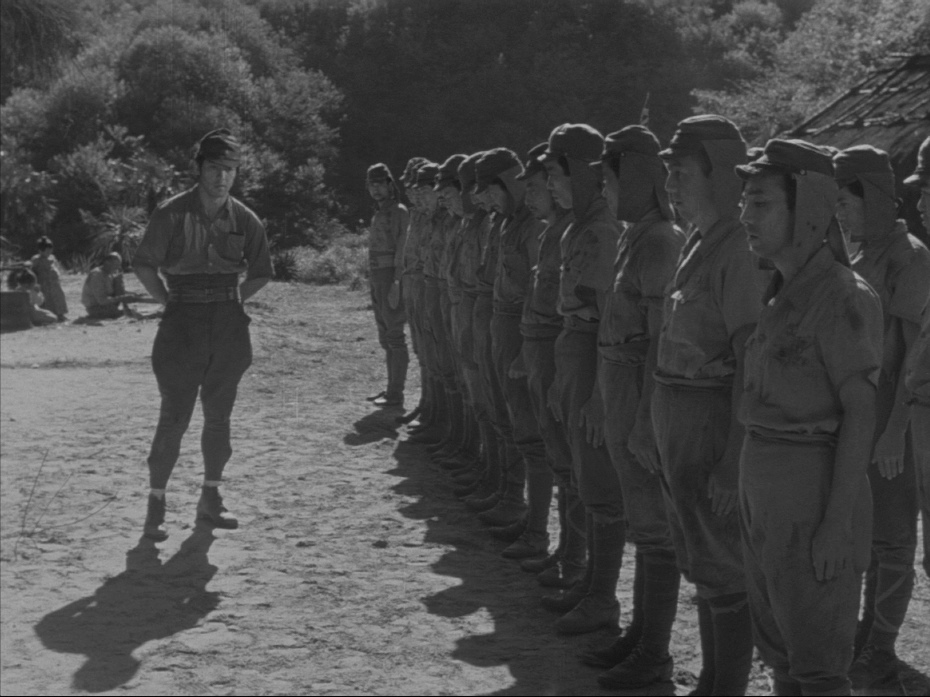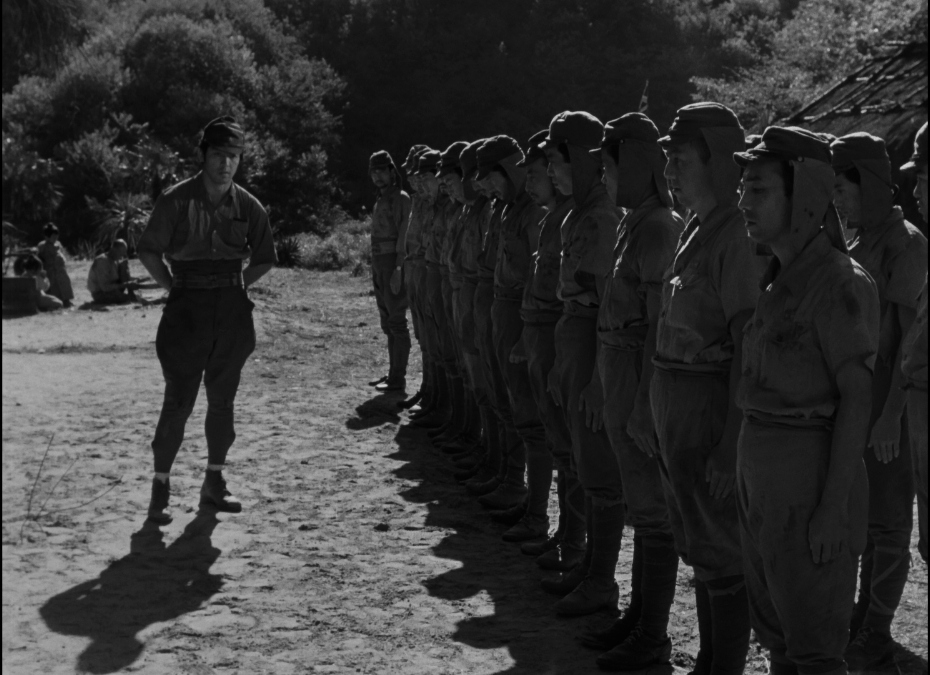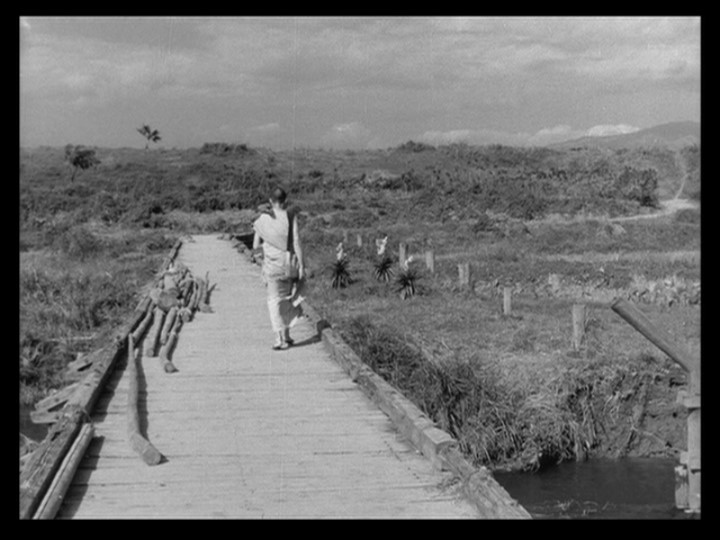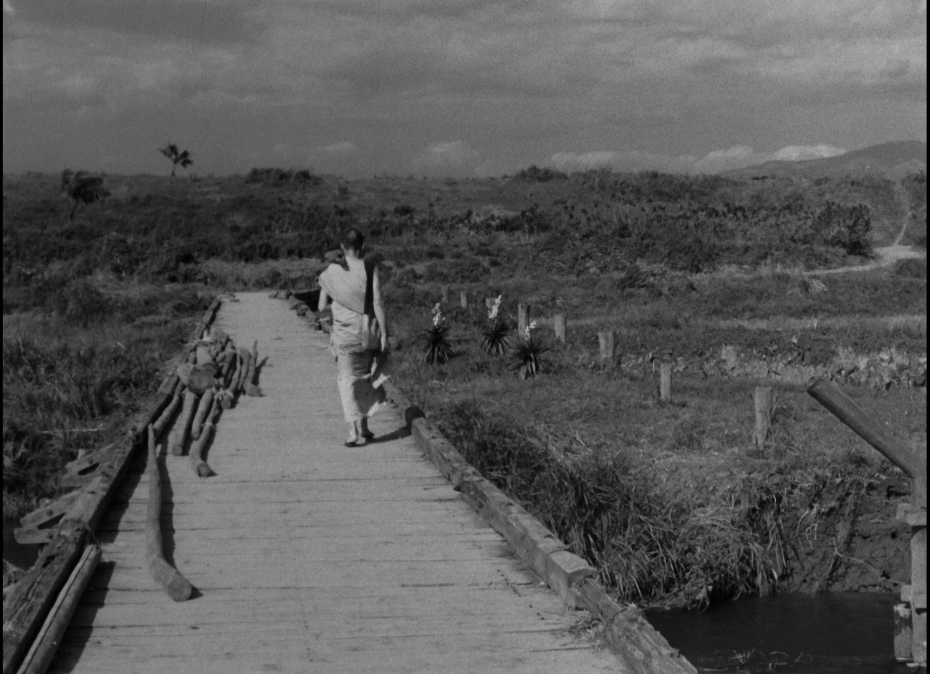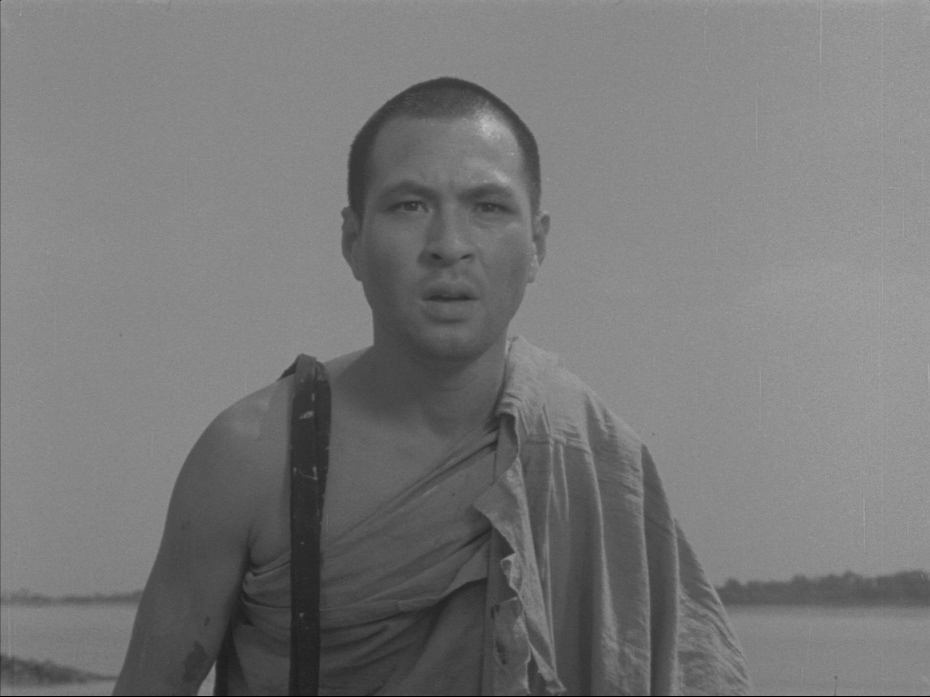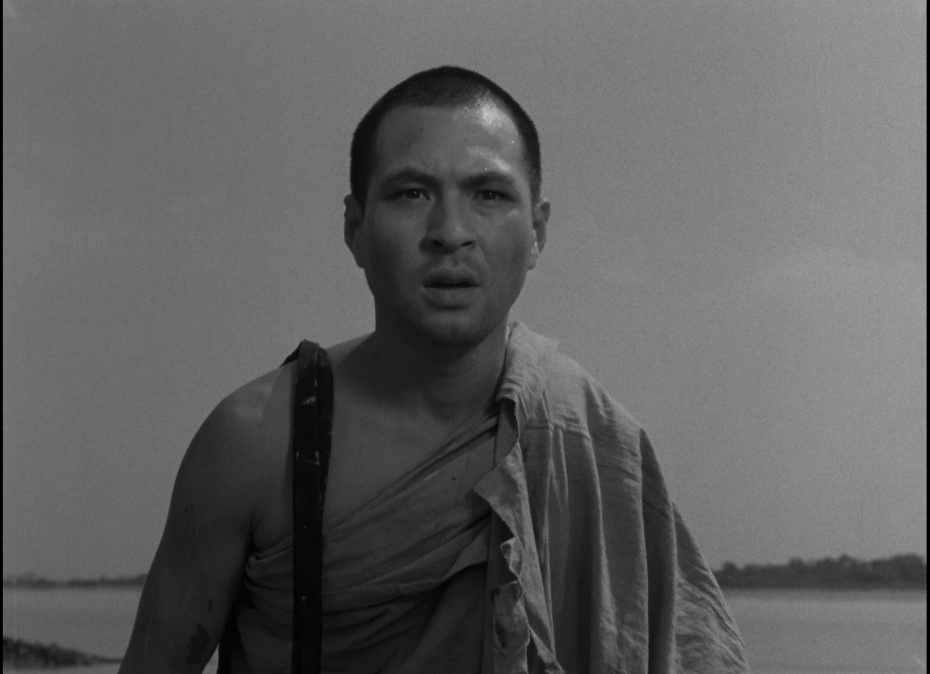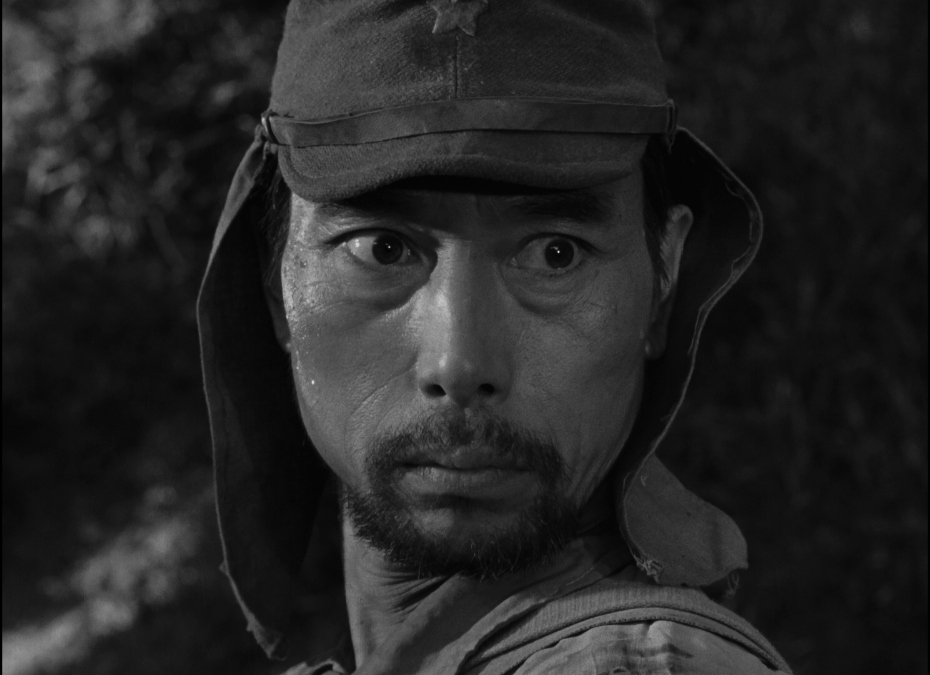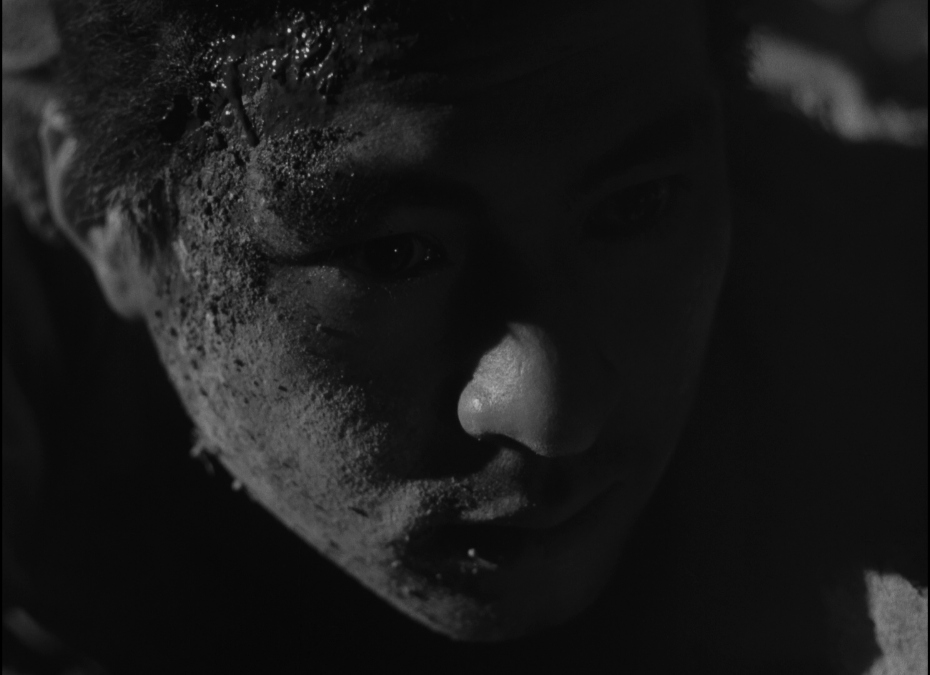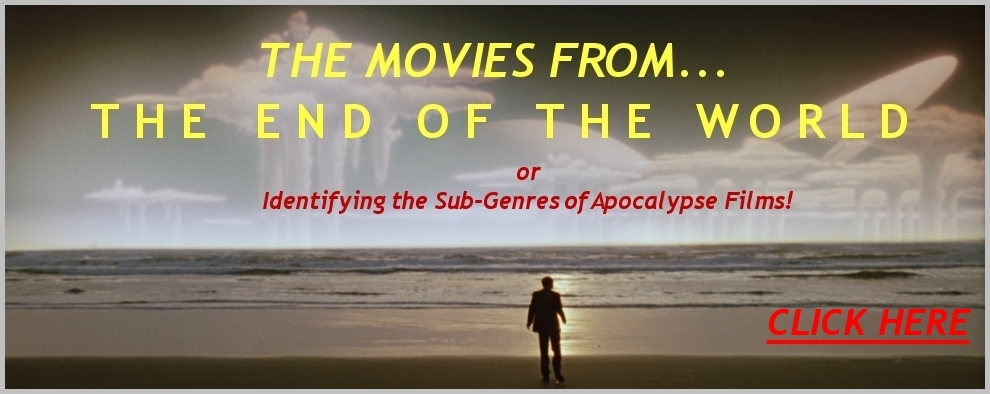|
An
enormous, sincere thank you to our phenomenal
Patreon
supporters! Your unshakable dedication is the bedrock that keeps DVDBeaver
going - we’d be lost without you. Did you know? Our patrons include a
director, writer, editor, and producer with honors like Academy Awards for
Best Picture and Best Director, a Pulitzer Prize-winning screenwriter, and a
Golden Globe-winning filmmaker, to name a few! Sadly, DVDBeaver has reached a breaking point where our existence hangs in the balance. We’re now reaching out to YOU with a plea for help. Please consider pitching in just a few dollars a month - think of it as the price of a coffee or some spare change - to keep us bringing you in-depth reviews, current calendar updates, and detailed comparisons. I’m am indebted to your generosity! |
![]()
![]()

![]()
![]()
|
Search DVDBeaver |
S E A R C H D V D B e a v e r |
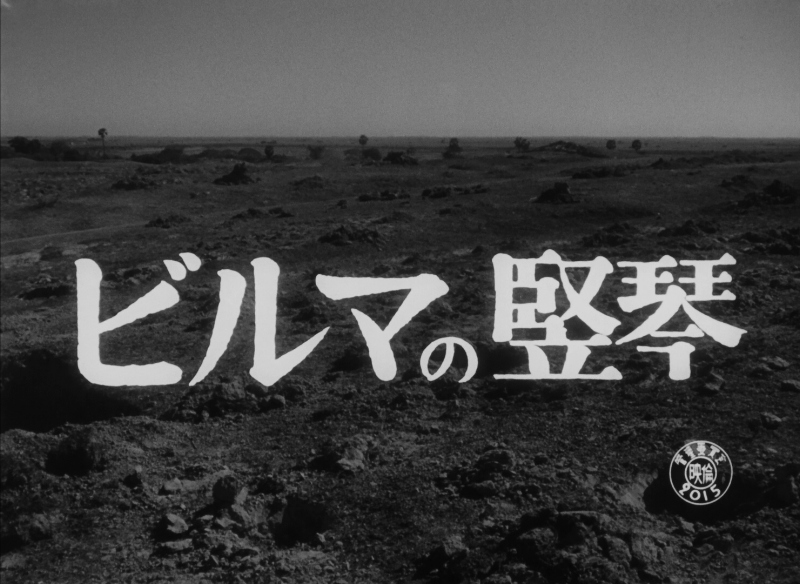
(aka "Biruma no tategoto" or "Harp of Burma" or "The Burmese Harp")
Directed by Kon Ichikawa
Japan 1956
|
An Imperial Japanese Army regiment surrenders to British forces in Burma at the close of World War II and finds harmony through song. A private, thought to be dead, disguises himself as a Buddhist monk and stumbles upon spiritual enlightenment. Magnificently shot in hushed black and white, Kon Ichikawa’s The Burmese Harp is an eloquent meditation on beauty coexisting with death and remains one of Japanese cinema’s most overwhelming antiwar sentiments, both tender and brutal in its grappling with Japan’s wartime legacy. ***
Kon Ichikawa's 1956 film The Burmese Harp (Biruma no tategoto),
adapted from Michio Takeyama's novel, is a poignant anti-war drama set in the
final days of World War II in Burma, following a Japanese infantry unit led by
the musically inclined Captain Inouye, whose soldiers use choral singing and
harp music to maintain morale amid defeat. |
Posters
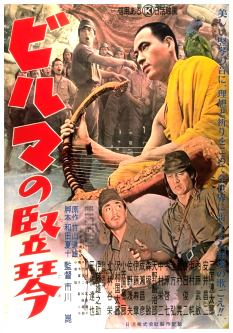 |
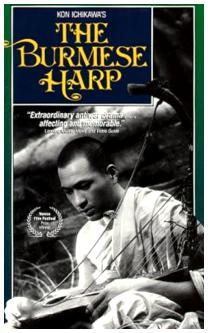 |
 |
 |
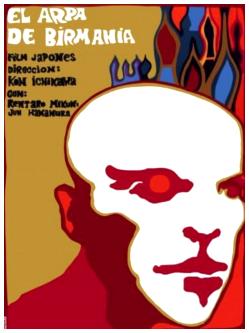 |
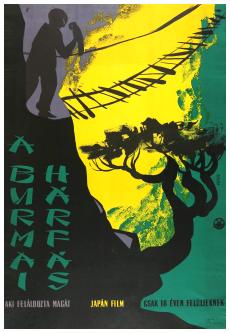 |
 |
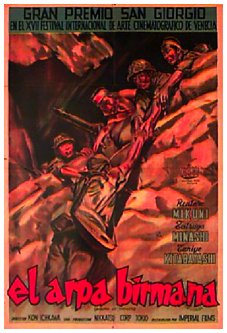 |
 |
 |
Theatrical Release: January 21st, 1956
Review: Criterion - Region FREE - 4K UHD
| Box Cover |
|
CLICK to order from: 4K UHD Blu-ray BONUS CAPTURES: |
| Distribution | Criterion Spine #379 - Region FREE - 4K UHD / Region 'A' Blu-ray | |
| Runtime | 1:57:08.938 | |
| Video |
1.37:1 1080P Dual-layered Blu-ray Disc Size: 43,435,480,026 bytesFeature: 34,321,698,816 bytesVideo Bitrate: 34.998 MbpsCodec: MPEG-4 AVC Video |
|
|
NOTE: The Vertical axis represents the bits transferred per second. The Horizontal is the time in minutes. |
||
| Bitrate Blu-ray: |
|
|
| Audio |
LPCM Audio Japanese 1152 kbps 1.0 / 48 kHz / 1152 kbps / 24-bit |
|
| Subtitles | English, None | |
| Features |
Release Information: Studio: Criterion
1.37:1 1080P Dual-layered Blu-ray Disc Size: 43,435,480,026 bytesFeature: 34,321,698,816 bytesVideo Bitrate: 34.998 MbpsCodec: MPEG-4 AVC Video
Edition Details: • Interviews with director Kon Ichikawa (16:25) and actor Rentaro Mikuni (11:48) • Trailer (3:41) PLUS: An essay by critic and historian Tony Rayns
4K UHD / Blu-ray Release Date: August 5th, 2025Transparent Case Chapters 23 |
|
| Comments: |
NOTE:
The below
Blu-ray
and
4K UHD
captures were taken directly from the
respective
disc.
While we are in possession of the
4K UHD disc,
we cannot resolve the encode yet, and therefore, cannot obtain screen
captures. We hope to add to this review at some point in the future. So, the below
captures are from Criterion's 2025 1080P
Blu-ray
transfer. Like 4K UHD transfers of The Long Wait, I, the Jury, and many others below, Criterion's 2160P transfer of The Burmese Harp does not have HDR applied (no HDR10, HDR10+, nor Dolby Vision.) We have seen many other 4K UHD transfers without HDR; Mondo Macabro's Dr. Jekyll and the Werewolf, Cult Film's Django 4K UHD, Umbrella's 4K UHD transfer of Peter Weir's The Last Wave, Radiance's Palindromes, and Criterion's 4K UHD transfers of Fires on the Plain, Killer of Sheep, Chungking Express, Winchester '73, The Mother and the Whore, I Am Cuba, The Others, Rules of the Game, Branded to Kill, In the Mood For Love, Night of the Living Dead, and further examples, Masters of Cinema's The Cabinet of Dr. Caligari and Kino's 4K UHDs of Bob le Flambeur, Last Year at Marienbad, Nostalghia, The Apartment, For a Few Dollars More, A Fistful of Dollars, In the Heat of the Night, and The Good, the Bad and the Ugly, as well as Koch Media's Neon Demon + one of the 4K UHD transfers of Dario Argento's Suspiria.
The transfer relies on enhanced contrast and detail to highlight the poetic
beauty of Burma's landscapes and the subtle emotional nuances in the
soldiers' faces. Sourced from the original 35mm negative, the 2022
restoration reveals intricate textures in the jungle foliage, sun-dappled
paths, and symbolic imagery like the harp against expansive horizons, with
natural film grain preserved for an authentic, organic look that avoids
digital artifacts. Compared to earlier Masters of Cinema
Blu-ray releases, which suffered from
muddy contrast and less refined shadow details, this
Blu-ray
and 4K UHD
version offers sharper clarity in wide shots and more depth in monochromatic
gradations, making Mizushima's spiritual journey feel even more immersive
and timeless. Dark, at times, this HD presentation looks magnificent.
NOTE: We have added 56 more large
resolution
4K UHD captures (in lossless
PNG format) for DVDBeaver Patrons
HERE
On their
Blu-ray
and 4K UHD,
Criterion use a linear PCM mono track (24-bit) in the
original Japanese language. Sound in The Burmese Harp is pivotal,
with
Akira Ifukube's (The
Snow Woman,
Battle
in Outer Space,
Anatahan,
The Mysterians, the original
Godzilla - and other Godzilla features like
King Kong Escapes -
the bulk of
Zatoichi
series, plus Kurosawa's
The Quiet Duel
and many others)
restrained score and the integration of choral singing and harp melodies
functioning as both diegetic and thematic elements that foster unity and
redemption. The music - featuring traditional Japanese tunes, Western
hymns like "Home, Sweet Home," and the haunting strains of the
Burmese harp - represents cultural bridging and morale-building, as
soldiers burst into harmonious song amid the chaos, their voices echoing
through jungles to signal safety or sorrow. Ifukube's compositions are
gentle and lilting, avoiding melodrama by employing minimal background
music, which heightens the contrast between silence and sound; moments
of quiet underscore the weight of unburied dead, while the harp's
plaintive notes evoke memory and mourning, symbolizing Mizushima's
spiritual journey. Sound design is sparse yet effective, with ambient
jungle noises, distant echoes of battle, and the resonant timbre of
group singing creating an auditory texture that immerses viewers in the
postwar limbo, though some critiques highlight occasional sentimentality
in the musical interludes that border on the unreal. The mono
presentation captures the harp's plaintive melodies with warmth and
precision, while ambient jungle sounds and distant echoes add subtle
atmospheric depth without any distortion or hiss, benefiting from
Criterion's meticulous cleanup. Criterion offer optional English
subtitles on their Region 'A'
Blu-ray
Criterion's
4K UHD
package duplicates the 2007 DVD's special features - available on the
accompanying
Blu-ray
disc, starting with a 1/4 hour interview with director Kon Ichikawa
discussing his adaptation process and anti-war themes, paired with a
dozen minute conversation with actor Rentaro Mikuni (Harakiri,
Vengeance Is Mine,
Rikyu) reflecting on his role as Captain Inouye and the
production's challenges in postwar Japan. An original trailer rounds out
the on-disc content, offering a glimpse into the film's initial
marketing as a pacifist fable. The package is further elevated by an
essay from critic and historian Tony Rayns (King
of the Children: And the New Chinese Cinema) in the accompanying
booklet, which explores the film's Buddhist undertones and its place in
Ichikawa's oeuvre.
Kon Ichikawa’s The Burmese Harp is a poignant anti-war film
adapted from Michio
Takeyama's 1946 children's novel, marking a significant entry in
postwar Japanese cinema's exploration of World War II's aftermath.
Directed by Ichikawa and scripted by his wife Natto Wada, the film
shifts the novel's Christian undertones toward Buddhist humanism,
focusing on a Japanese soldier's spiritual transformation in Burma (now
Myanmar) during the war's closing days. Produced by Nikkatsu Studios
amid Japan's economic recovery, the film contrasts with Ichikawa's
later, bleaker
Fires on the Plain
(1959) by offering redemption through music and spirituality, yet it
critiques militarism by portraying war's moral chaos and the path to
reconciliation. Private Mizushima embodies the film's humanist core:
initially a cheerful harpist fostering unit harmony, his wartime ordeals
catalyze a profound metamorphosis into a solitary monk dedicated to
burying the dead. Shoji Yasui's performance conveys quiet intensity, his
youthful innocence yielding to ascetic resolve, symbolizing Japan's
postwar soul-searching. Captain Inouye represents enlightened
leadership, using music to humanize soldiers and model redemption,
contrasting with rigid militarists. Supporting characters like the
unit's choristers highlight camaraderie's fragility, their search for
Mizushima underscoring themes of loss and loyalty. Compared to
Fires on the Plain, it offers
optimism versus despair; echoes Kurosawa's humanism in
Seven Samurai
but prioritizes spirituality. Influences include Italian neorealism,
with its on-location shooting, and anticipates global anti-war films
like
The Bridge on the River Kwai.
Remade by Ichikawa in color (1985), the original's monochrome
enhances timelessness, contributing to Japan's "victim consciousness"
while subtly addressing reconciliation with Asia. It remains relevant,
evoking profound empathy and underscoring Ichikawa's versatility in
blending artistry with activism. Criterion's 4K UHD
and
Blu-ray
release of The Burmese Harp is a commendable a/v upgrade that
honors Ichikawa's lyrical masterpiece through a pristine restoration and
solid presentation, making it an essential acquisition for fans of
Japanese cinema and anti-war classics. This edition reaffirms the film's
enduring legacy as a beacon of redemption amid devastation - recommended
for both newcomers and collectors seeking a definitive home video
experience. |
Menus / Extras
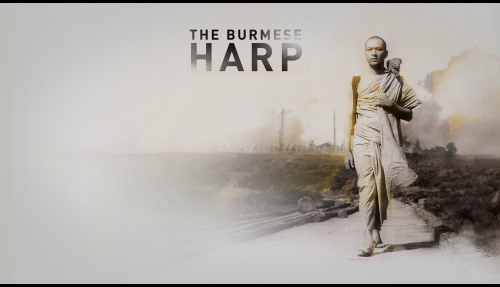 |
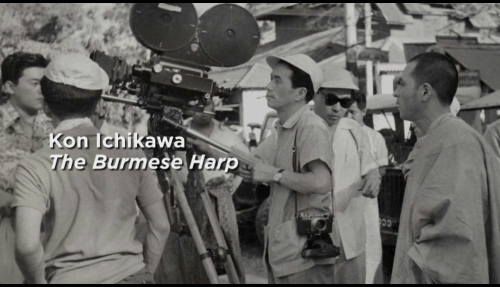 |
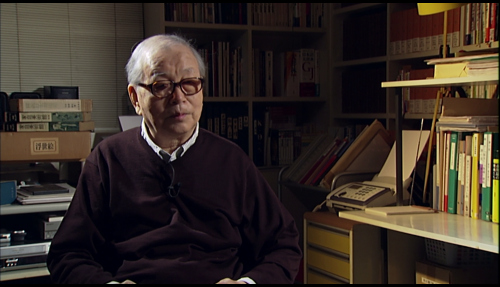 |
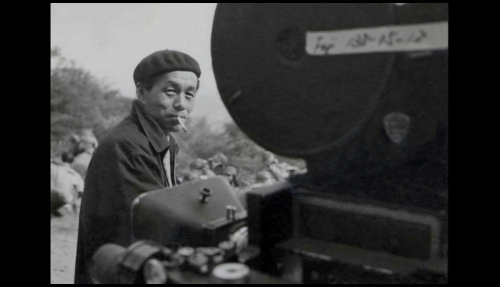 |
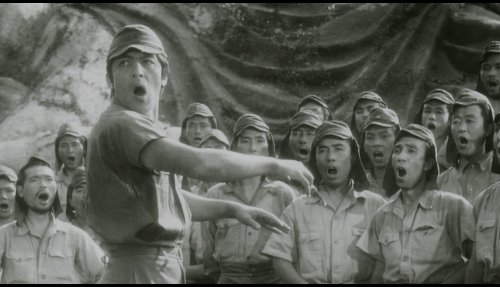 |
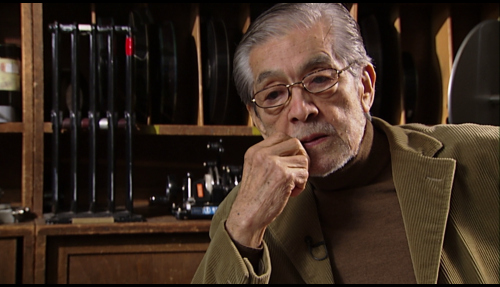 |
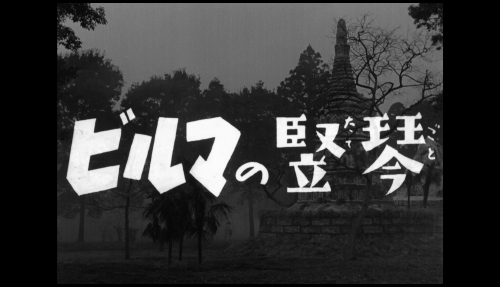 |
CLICK EACH BLU-RAY and 4K UHD CAPTURE TO SEE ALL IMAGES IN FULL RESOLUTION
|
1) Criterion - Region 1 - NTSC TOP
|
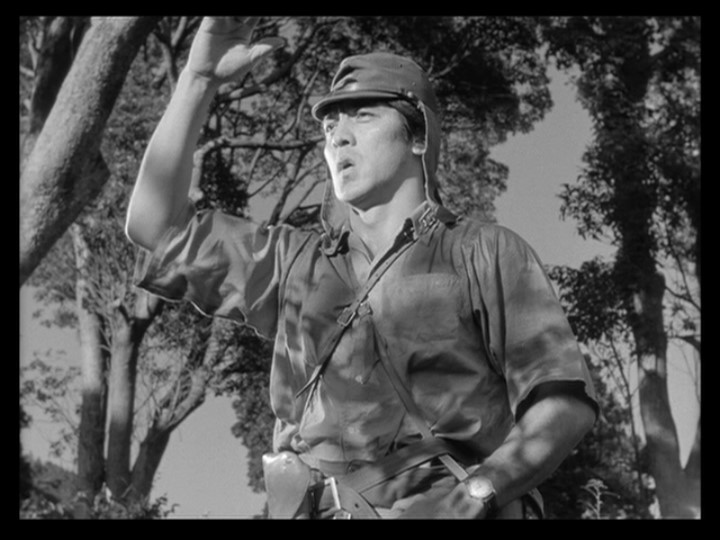 |
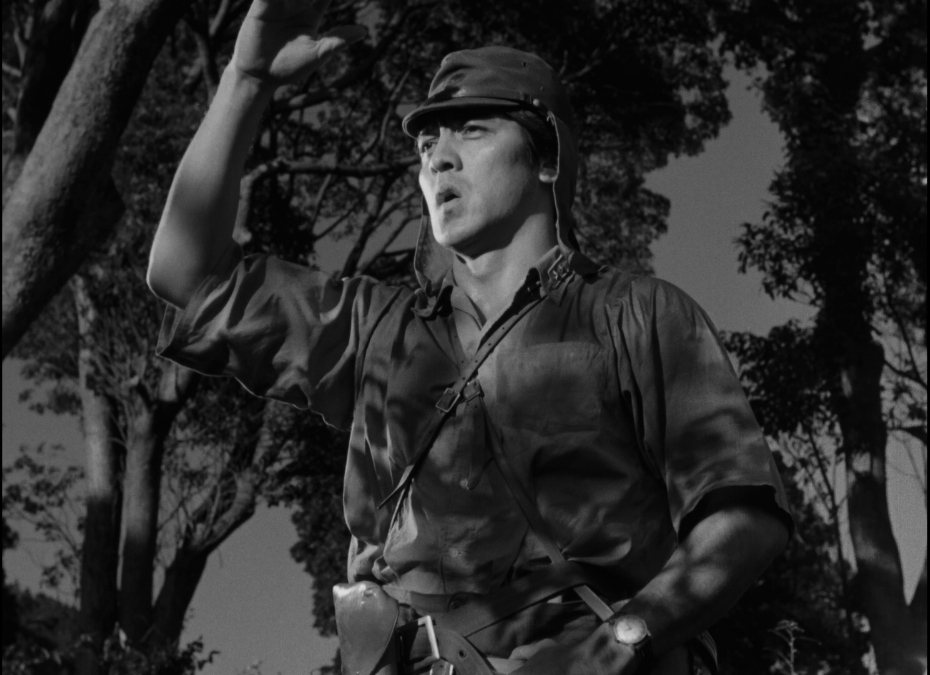 |
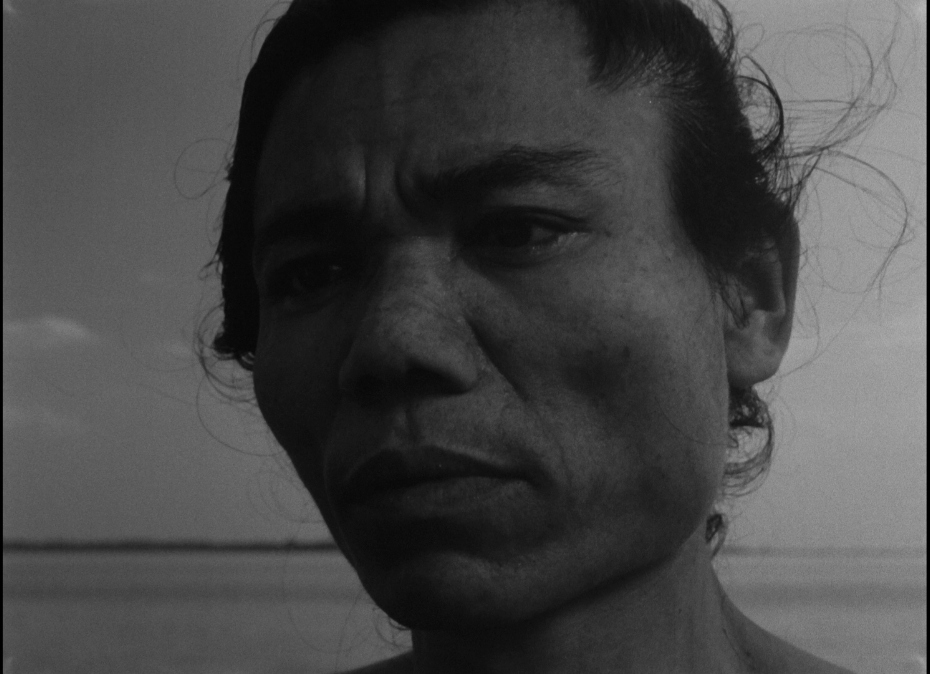 |
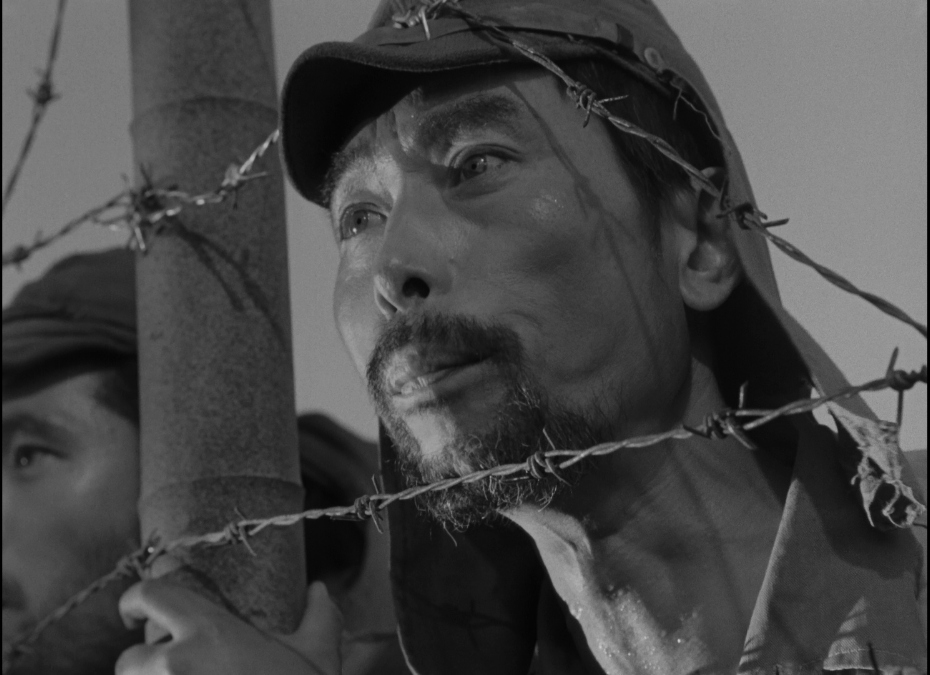 |
More full resolution (1920 X 1080) Criterion Blu-ray Captures for DVDBeaver Patreon Supporters HERE
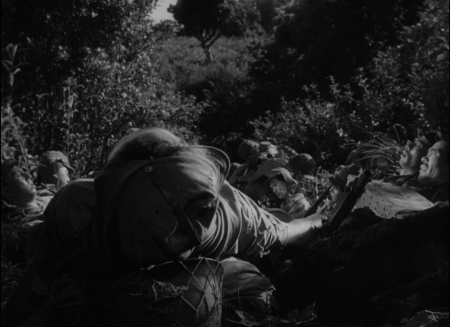 |
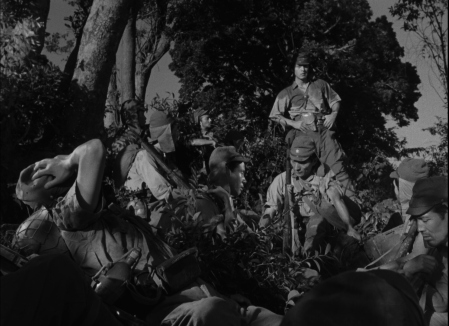 |
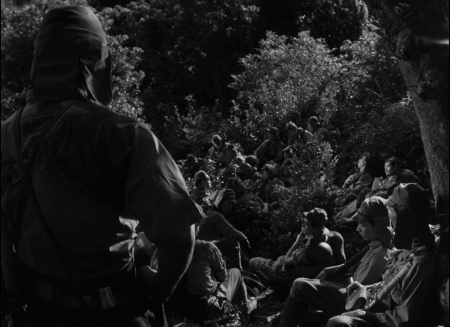 |
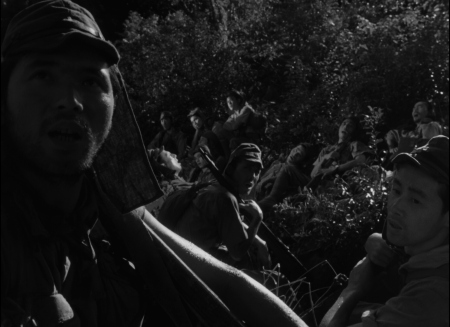 |
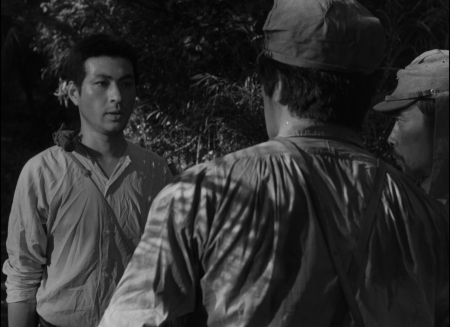 |
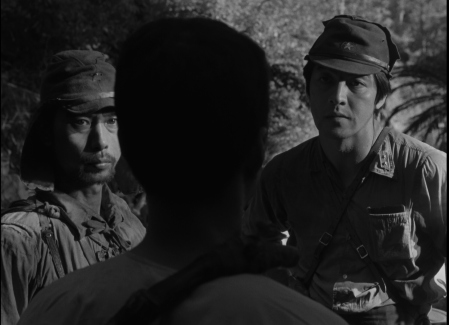 |
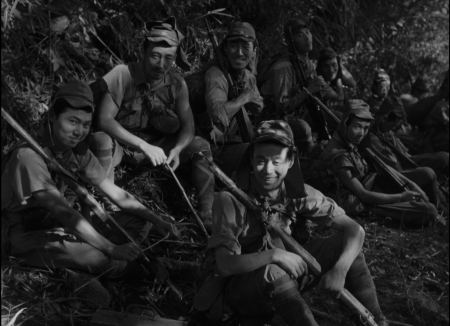 |
 |
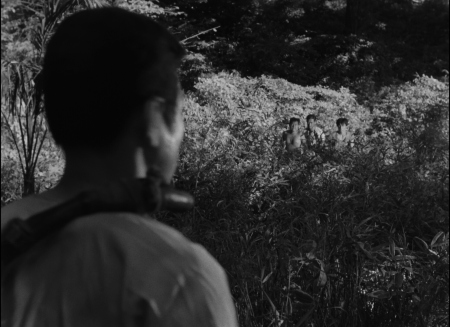 |
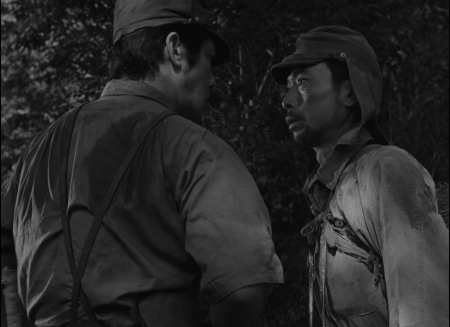 |
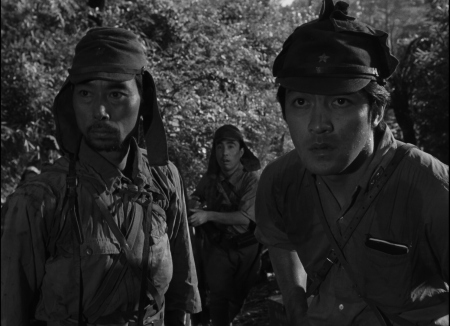 |
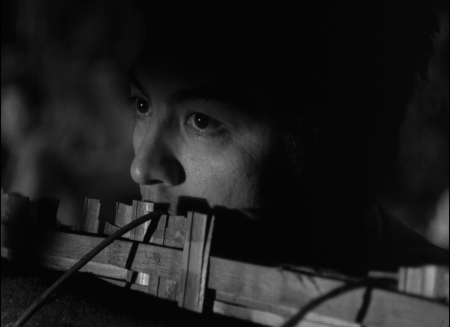 |
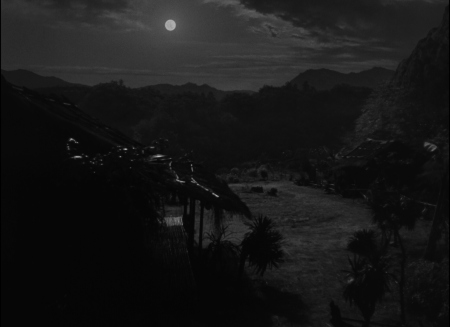 |
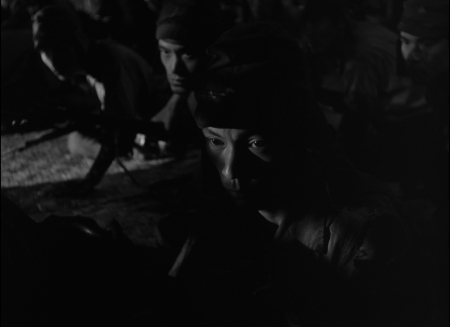 |
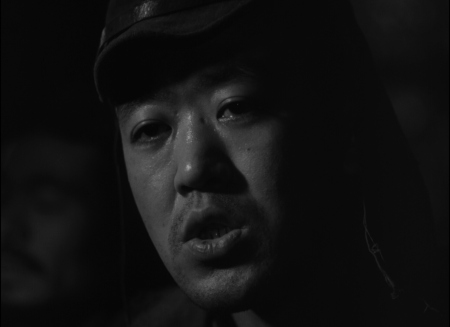 |
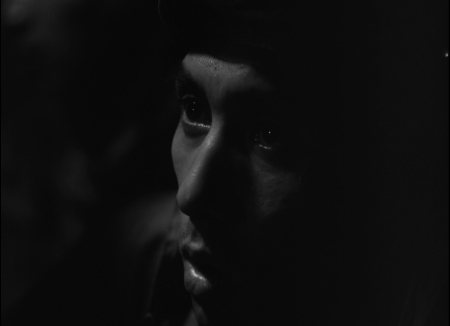 |
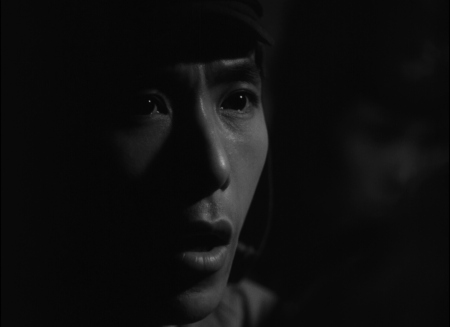 |
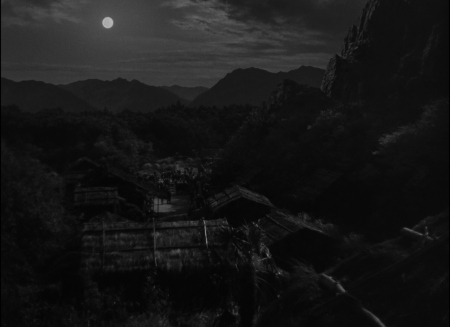 |
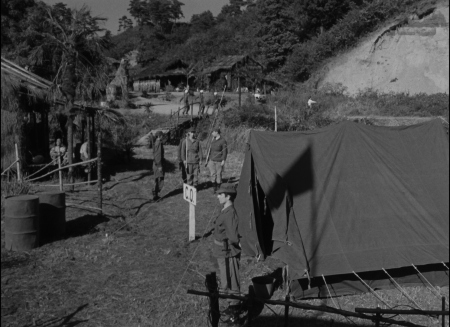 |
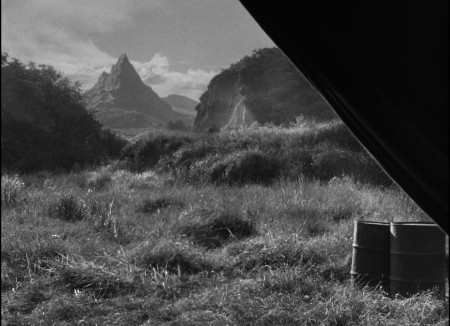 |
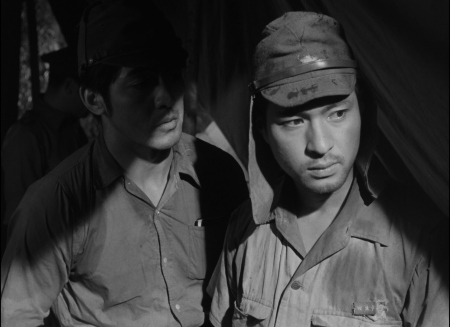 |
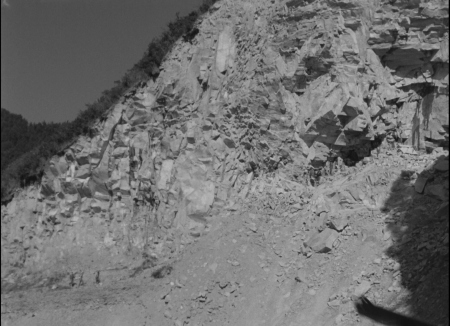 |
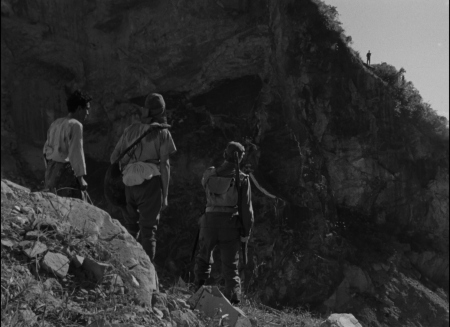 |
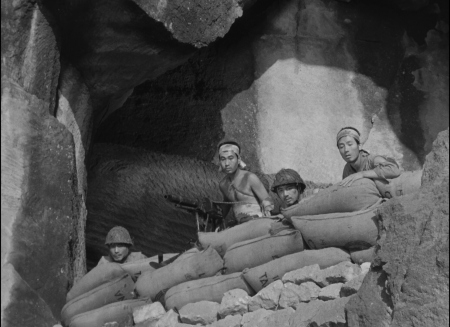 |
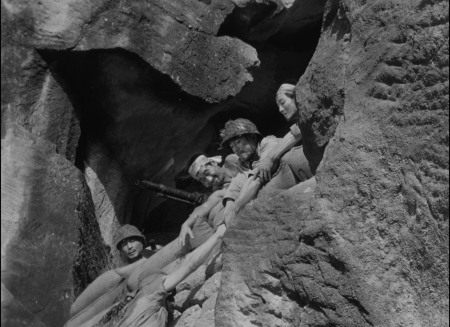 |
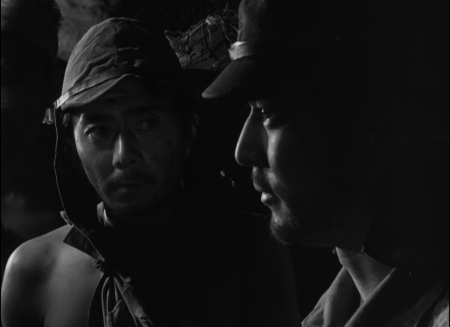 |
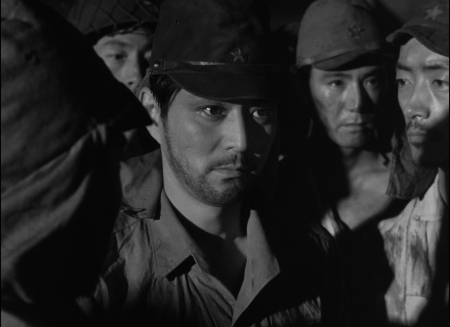 |
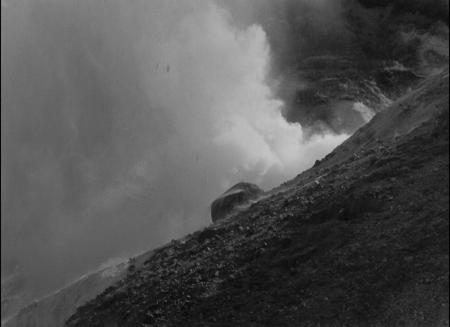 |
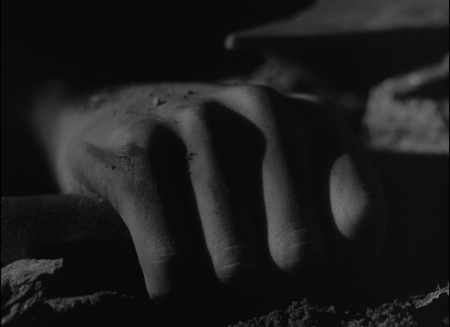 |
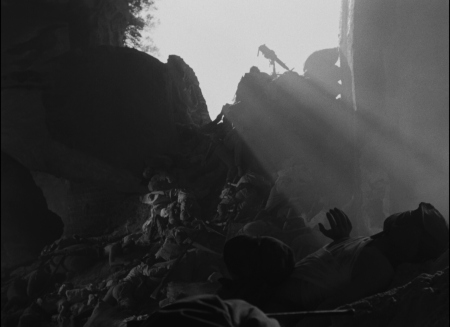 |
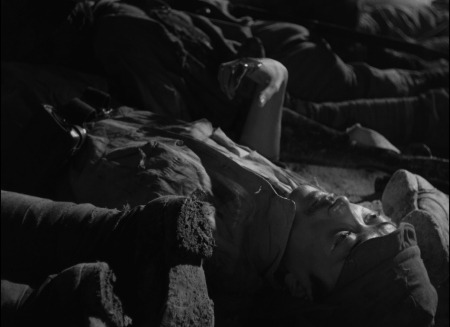 |
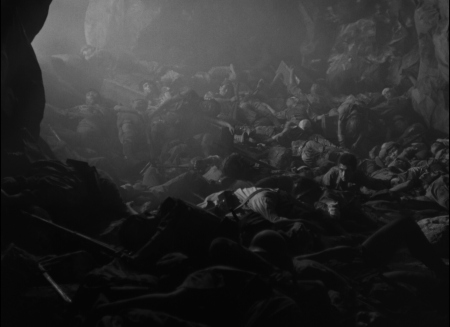 |
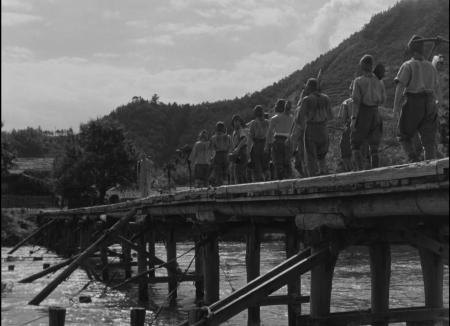 |
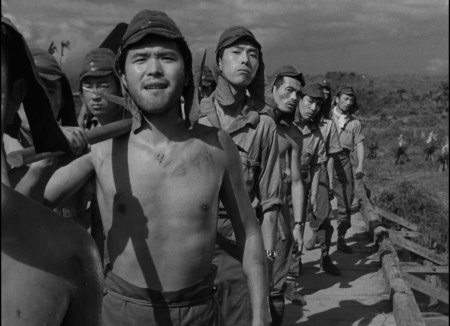 |
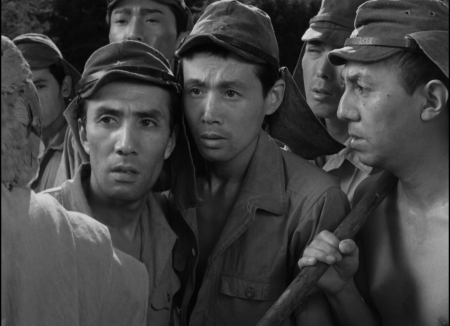 |
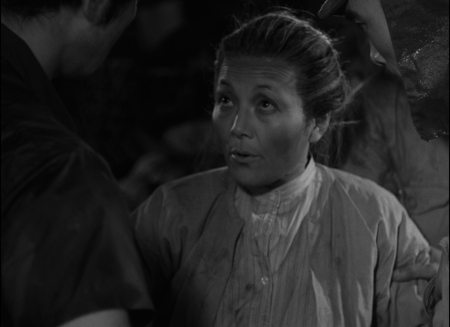 |
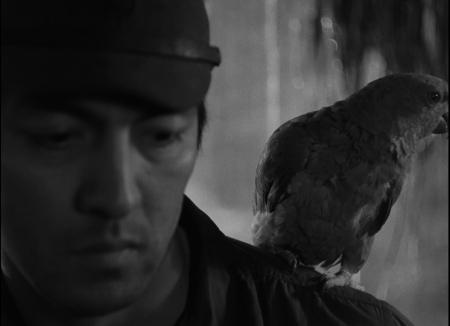 |
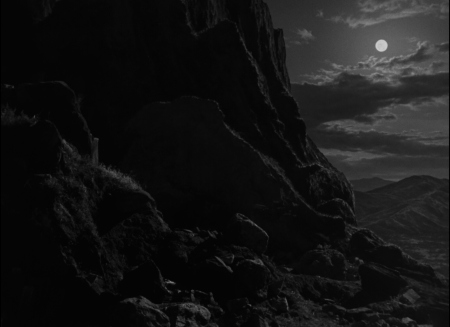 |
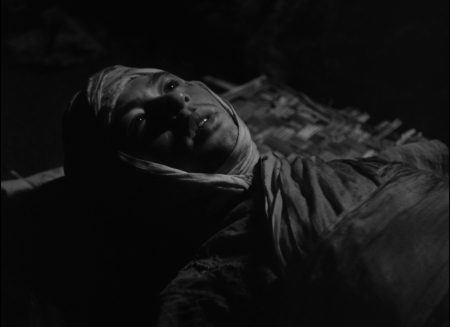 |
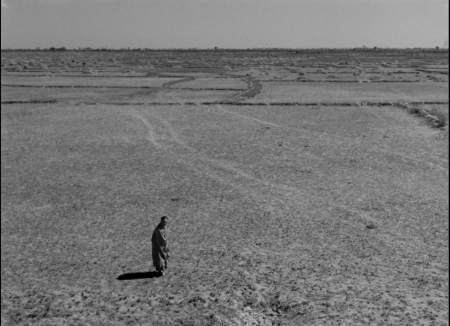 |
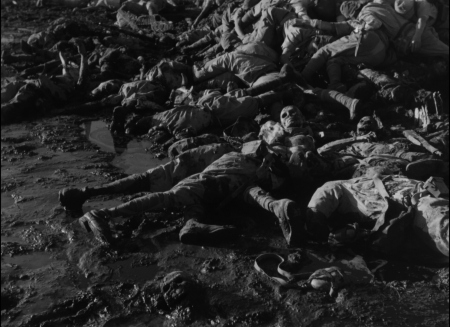 |
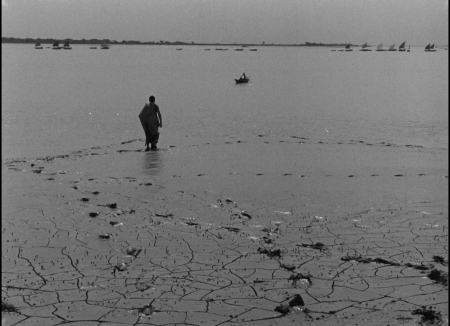 |
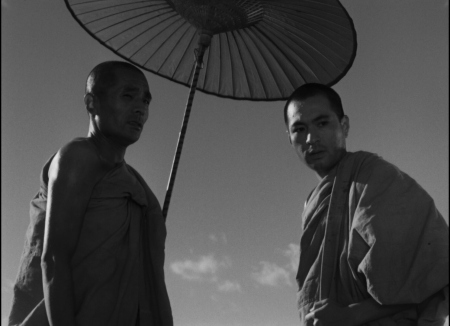 |
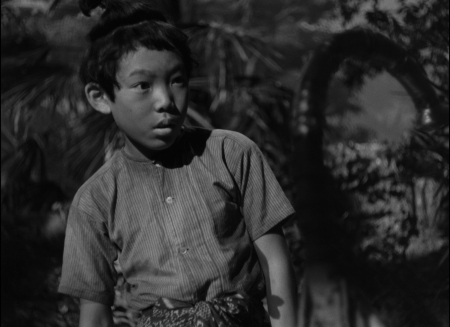 |
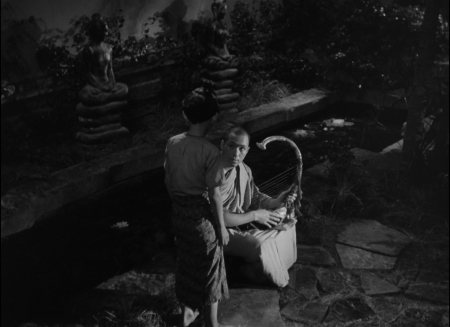 |
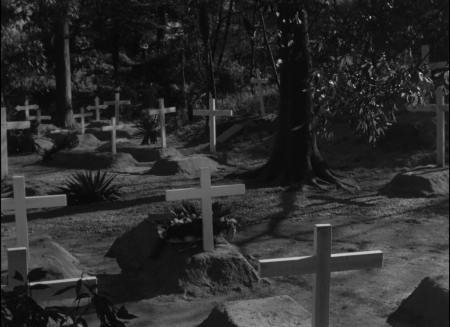 |
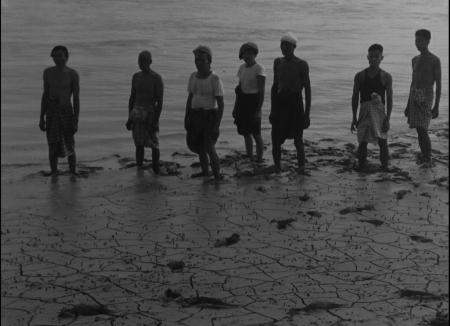 |
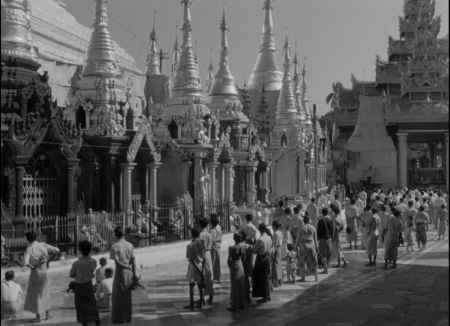 |
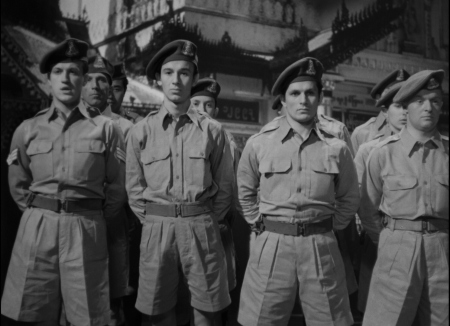 |
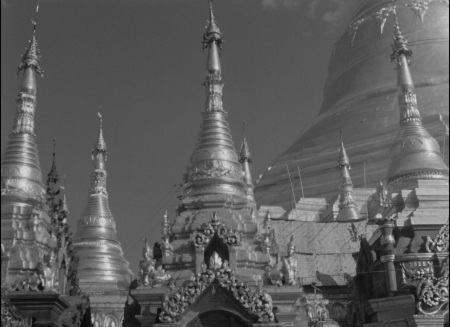 |
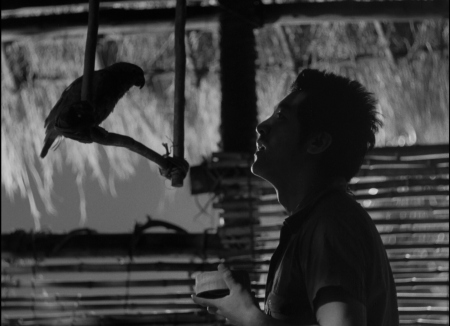 |
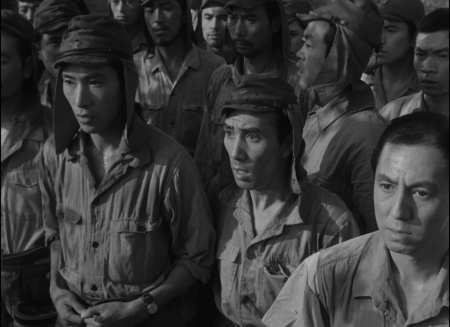 |
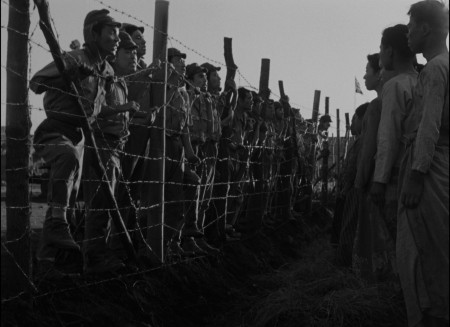 |
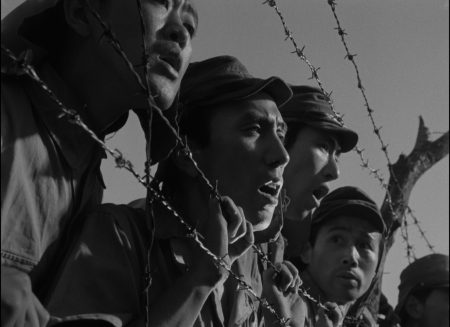 |
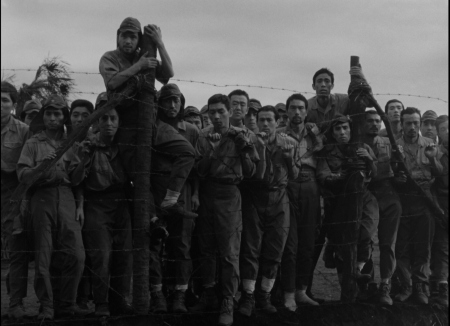 |
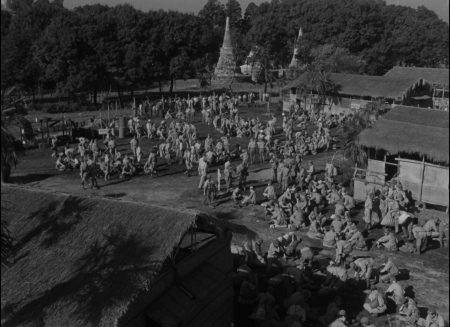 |
| Box Cover |
|
CLICK to order from: 4K UHD Blu-ray BONUS CAPTURES: |
| Distribution | Criterion Spine #379 - Region FREE - 4K UHD / Region 'A' Blu-ray | |
![]()
![]()

![]()
![]()
|
Search DVDBeaver |
S E A R C H D V D B e a v e r |



